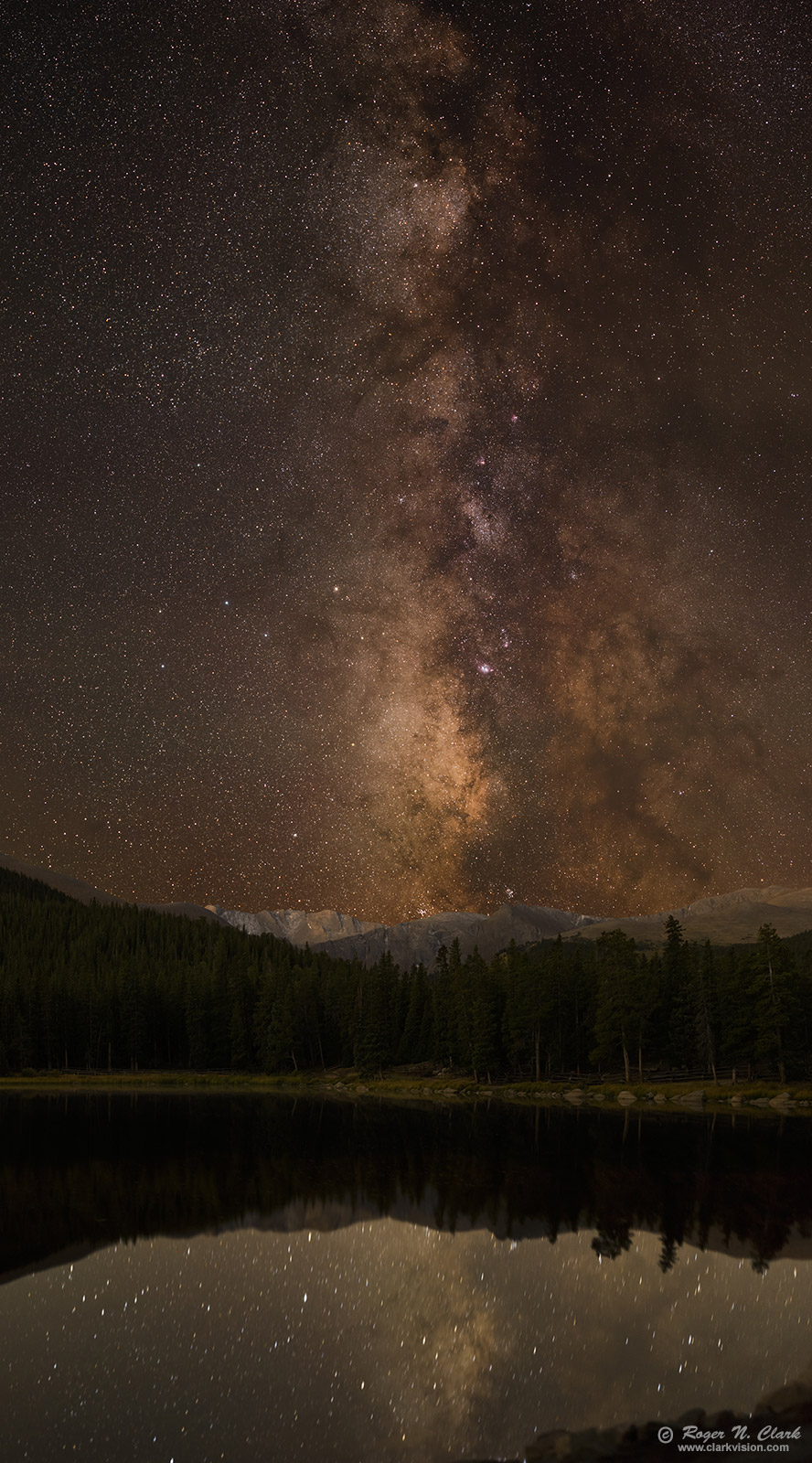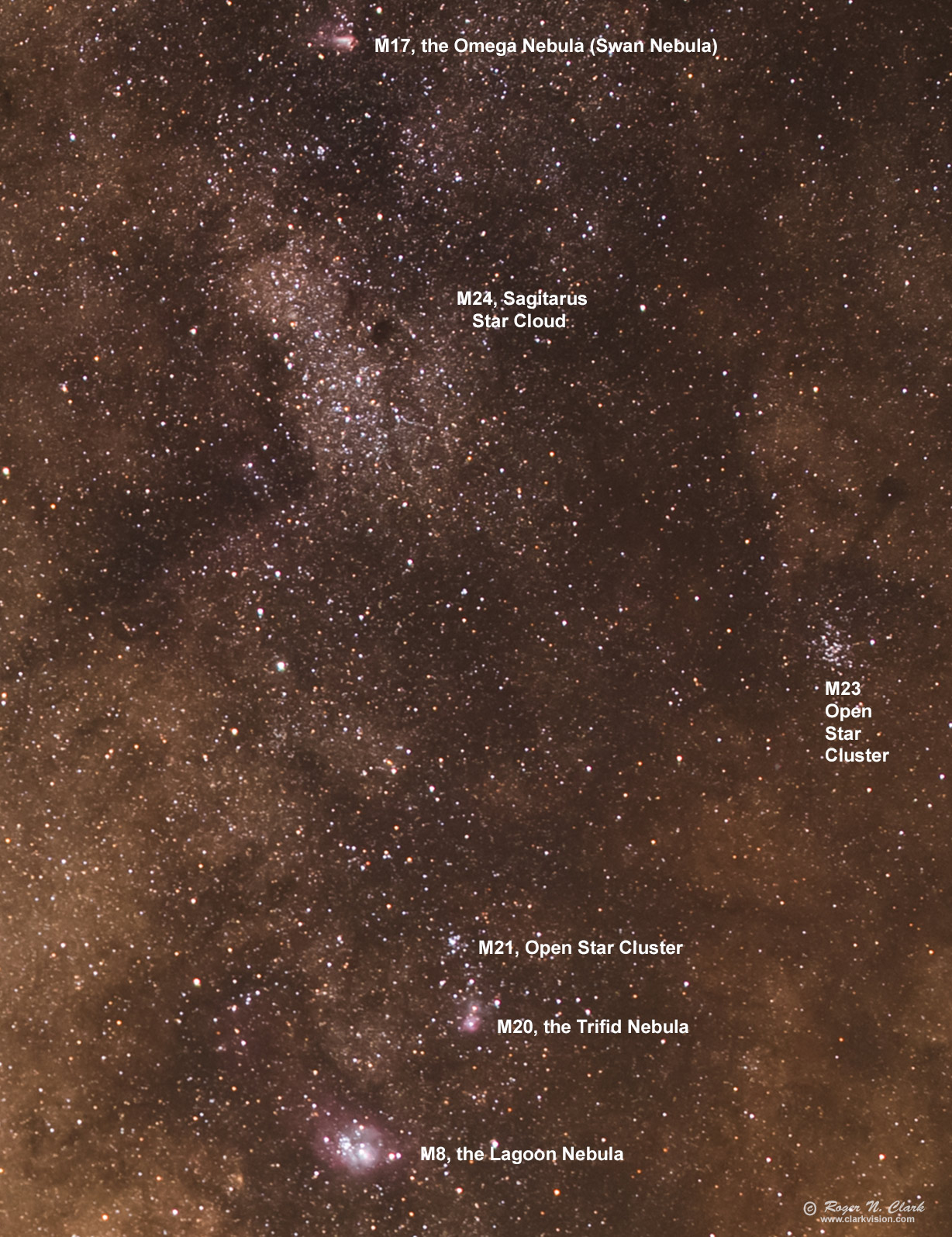| Home | Galleries | Articles | Reviews | Best Gear | New | About | Contact | Gallery Index | Previous |
Next |

| Home | Galleries | Articles | Reviews | Best Gear | New | About | Contact | Gallery Index | Previous |
Next |

The Milky Way stands vertically in the northern hemisphere in the early evening in September. This orientation allows for some beautiful scenes, like this scene at Echo Lake, Colorado. In the distance is 14,265 foot (4,348 m) Mount Blue Sky. The center of the Milky Way galaxy is located just above and right of Mt Blue Sky and its reflection is seen in the lake. The mountains are lit by the Denver metro area. There is a faint dark clouds running horizontally through the middle of the sky.
Can you pick out the "Dark Horse" in the Milky Way?
Technical. This image is a 4-frame mosaic. Canon EOS R5 45 megapixel Mirrorless Digital Camera, Sigma Art 40mm f/1.4 DG HSM lens, at f/1.4, ISO 1600. Reflection: two 20-second exposures, tracked and stacked. Land: fixed tripod, two 60-second exposures stacked. Sky 1 (middle mosaic position): 5 exposures 20 seconds each, tracked and stacked. Sky 2 (top mosaic position): 5 exposures 20 seconds each, tracked and stacked. Total exposure time: 6 minutes. These days, many short exposures are needed and stacked with sigma-clipped rejection of changing components in the scene to reject the many satellites now in our night skies. In this case, most satellites were rejected in the 5 exposures, but two faint trails remained and were removed in post production. Better would be at least 8 frames stacked. Exposure of the stars were tracked using an iOptron SkyTracker. The full resolution image is 5621 pixels wide by 10128 pixels high (57 megapixels) and this image is 888 pixels wide by 1600 pixel high image (16% of full scale).
No dark frame subtraction, and no flat fields were used because they were not needed. A flat field is in the lens profile in the raw converter (Photoshop), and bias is a single value for all pixels and in the raw file EXIF data. The Canon R5 has the very low pattern noise, and on-sensor dark current suppression, so there is no need to do dark frames. Modern raw converters correct for hot pixels and, with lens profiles, correct for light fall-off, so there is no need for flat field corrections. Processing was done with 16-bits/channel. This makes astrophotography post processing simple.
A full pixel crop is shown below with labels.

This is a natural color image. How do we know the colors are reasonable? The star colors can be checked against stellar photometry. Red stars have B-V > 2, orange stars have B-V of 1 to about 2. The blue-white stars have B-V in the range of 0 to -0.5. The colors closely follow the color sequence in Table 1 at Color of Stars. Solar-type stars have a B-V of 0.63 and appear close to white (daylight white balance). Less than 1% of stars in the Milky Way are blue. Interstellar dust is brownish in color, not the typical fake blue we see in many Milky Way photos we see these days on the internet. For more on natural color in the night sky see Parts 2a, 2b, 2c and 2d on Color of the Night Sky and proper post processing to show those colors.
To learn how to obtain stunning images like this, please visit my Extensive Articles on Photography .
Keywords to this image = astrophoto-1 nightscapes reflection landscape-1 night low-light digital_astro colorado mountains canon_r5 mosaic NEW
Image ID: echo-lake-and-mt-blue-sky-nightscape-rnclark-2025-09-18-j-1600s.jpg
| Home | Galleries | Articles | Reviews | Best Gear | Science | New | About | Contact |
Last updated November 03, 2025